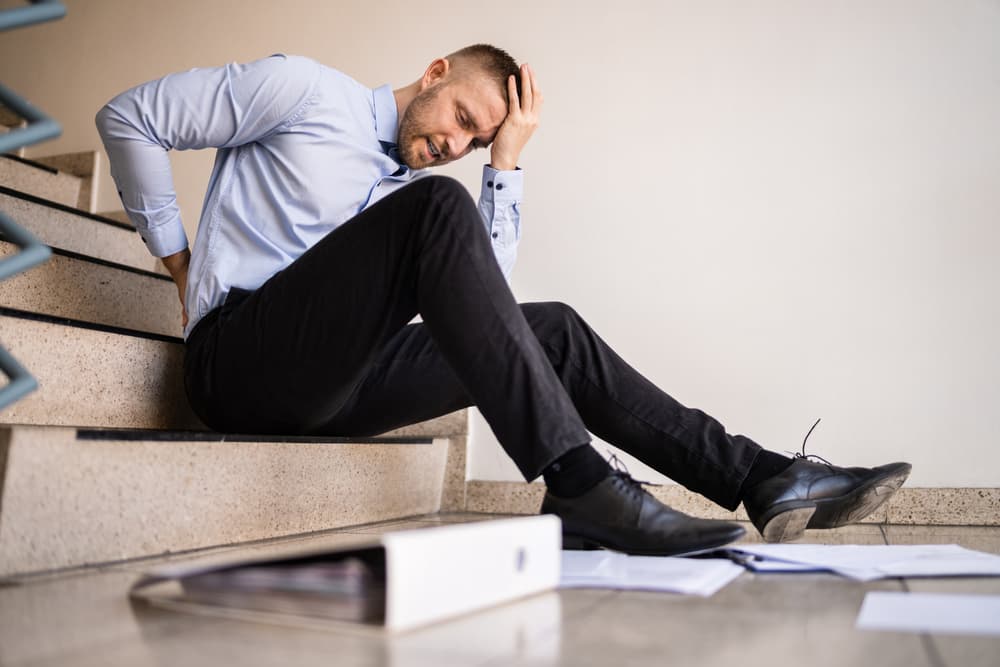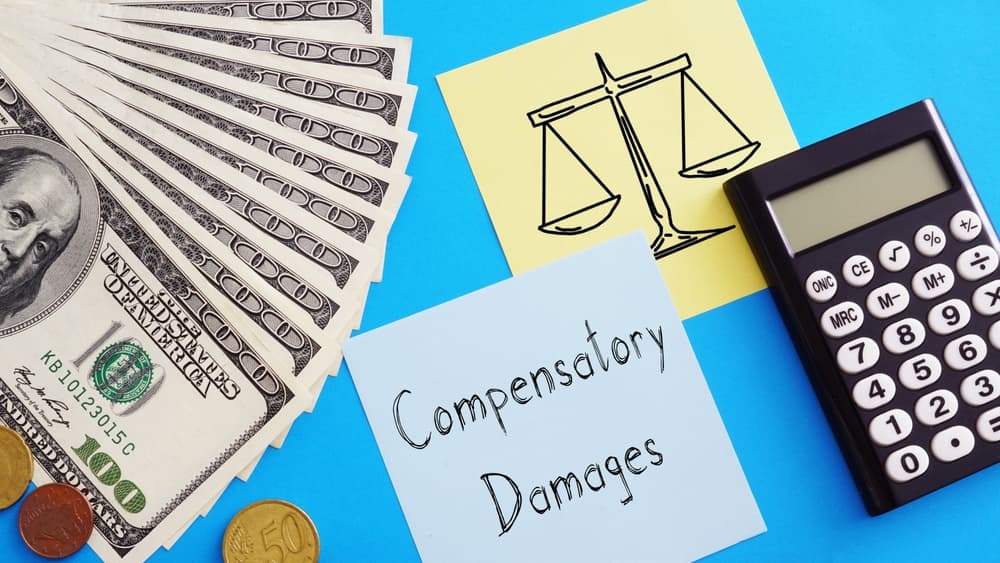Premises accidents, including slip and falls, trip and falls, staircase accidents, and occurrences resulting from negligent security, typically happen when property owners are negligent in some way. The purpose of premises liability law is to hold these property owners accountable for occurrences and injuries that result from their negligence.
If you sustained injuries in an occurrence on someone else's property, you should consult a premises liability attorney in your area right away. Your lawyer can determine your eligibility for filing a premises liability claim with the property owner's insurance company and take the necessary legal steps on your behalf. Throughout the process, your attorney will aggressively advocate for your legal interests and pursue the financial recovery you need for your losses.
Types of Premises Liability Cases
Premises liability cases cover a wide range of situations where someone suffers an injury on another person's property due to unsafe conditions. The following are the various types of premises liability cases:
- Slip-and-fall Accidents — Slip-and-fall accidents occur when a person slips, trips, or falls due to hazardous conditions on someone else's property, such as wet floors, uneven surfaces, or inadequate lighting. Property owners have a duty to maintain safe conditions and warn visitors of any known hazards.
- Trip-and-fall Accidents — Similar to slip-and-fall accidents, trip-and-fall accidents happen when a person trips over an obstacle or hazard on someone else's property, such as loose cables, debris, or uneven pavement. Property owners are responsible for removing or repairing hazards that could cause tripping accidents.
- Unsafe Staircases and Railings — Property owners are responsible for maintaining safe staircases and railings to prevent accidents. This includes ensuring that stairs are free from defects, such as broken steps or missing handrails, and that railings are sturdy and properly installed.
- Negligent Security — Property owners, such as businesses, landlords, and homeowners' associations, have a duty to provide adequate security measures to protect visitors from foreseeable harm, such as assaults, robberies, or other criminal acts. Failure to provide adequate security, such as proper lighting, surveillance cameras, or security personnel, can result in liability for injuries sustained on the property.
- Dog Bites — Dog owners can be liable for injuries their pets cause if the dog bites someone on their property or while off-leash in a public area. In Florida, dog owners are held strictly liable for injuries their dogs cause, regardless of the dog's previous behavior or the owner's knowledge of aggression.
- Swimming Pool Accidents — Property owners with swimming pools are responsible for ensuring that the pool area is safe and secure to prevent accidents, such as drownings or slip-and-falls. This includes installing proper fencing, gates, and safety features, as well as providing adequate supervision and warnings.
- Inadequate Maintenance — Property owners have a duty to regularly inspect and maintain their premises to prevent hazardous conditions from developing. Failure to address issues such as broken sidewalks, potholes, or malfunctioning equipment can result in liability for injuries that negligent maintenance caused.
Understanding these various types of premises liability cases can help individuals recognize when they may have a legal claim for injuries sustained on someone else's property. If injured due to unsafe conditions, consulting a premises liability lawyer can help determine the best course of action for seeking compensation.
Common Injuries in a Premises Accident
In premises accidents that happen on someone else's property, several common injuries can occur. These injuries often result from hazardous conditions or negligent maintenance on the premises. Here are some of the most common injuries:

- Fractures and Broken Bones — One of the most frequent injuries in premises accidents is fractures or broken bones. These injuries can happen due to slip-and-falls.
- Sprains and Strains — Sprains and strains occur when ligaments or muscles stretch or tear. These injuries can happen in slip-and-fall accidents or while trying to navigate hazardous conditions on the property.
- Cuts and Lacerations — Sharp objects, broken glass, or other debris on the premises can cause cuts and lacerations. These injuries may require stitches or medical attention to prevent infection.
- Head Injuries — Head injuries, including concussions and traumatic brain injuries (TBIs), can occur in premises accidents, particularly in slip-and-fall incidents where the head strikes a hard surface. Head injuries can have long-term consequences and may require extensive medical treatment.
- Back and Spinal Cord Injuries — Falls or accidents involving heavy objects can result in back injuries or damage to the spinal cord. These injuries can cause chronic pain, limited mobility, or even paralysis, depending on the severity of the injury.
- Soft Tissue Injuries — Soft tissue injuries, such as bruises, contusions, or sprains, are common in premises accidents. These injuries may not be immediately apparent but can cause significant pain and discomfort over time.
- Burns — Burns can occur in premises accidents involving hot surfaces, chemicals, or electrical malfunctions. Burns can range from minor first-degree burns to severe third-degree burns requiring extensive medical treatment.
- Electric Shock Injuries — Faulty wiring or electrical appliances on the premises can lead to electric shock injuries. These injuries can cause burns, muscle contractions, and even cardiac arrest in severe cases.
- Drowning and Near-drowning — In premises accidents involving swimming pools or bodies of water, drowning or near-drowning incidents can occur. Lack of proper safety measures or supervision can contribute to these accidents, especially in cases involving children.
- Psychological Trauma — In addition to physical injuries, premises accidents can also cause psychological trauma, such as anxiety, depression, or post-traumatic stress disorder (PTSD). Witnessing or experiencing a traumatic event on someone else's property can have lasting effects on mental health.
How To Successfully Prove a Premises Liability Claim or Lawsuit
Proving a premises liability claim or lawsuit involves establishing certain legal elements to demonstrate that the property owner was negligent and responsible for the injuries the victim sustained. Here is how to prove the key elements of a premises liability case:
- Duty of Care — The first step in proving a premises liability claim is to establish that the property owner owed a duty of care to the victim. This duty of care requires property owners to maintain their premises in a reasonably safe condition and to warn visitors of any known hazards. The extent of the duty of care owed depends on the relationship between the property owner and the visitor, with higher duties owed to invitees (such as customers) compared to trespassers.
- Breach of Duty — The next step is to show that the property owner breached that duty by failing to maintain safe conditions or warn visitors of hazards. This can involve proving that the property owner knew or should have known about the dangerous condition and failed to take reasonable steps to address it.
- Causation — To succeed in a premises liability claim, the victim must demonstrate that the property owner's breach of duty was the proximate cause of their injuries. This requires showing that the hazardous condition directly led to the accident and resulting harm.
- Notice — In some cases, the property owner may argue that they were not aware of the hazardous condition or did not have sufficient notice to address it. To counter this defense, the victim must provide evidence showing that the property owner either knew or should have known about the dangerous condition through regular inspections, maintenance records, or prior incidents.
- Injuries and Damages — Finally, the victim must prove that they suffered injuries and damages as a result of the accident. This can include medical records documenting the extent of the injuries, receipts for medical expenses, proof of lost income, and evidence of pain and suffering.
To prove these legal elements in a premises liability claim, it is essential to gather evidence, such as photographs of the hazardous condition, witness statements, medical records, maintenance records, and any other relevant documentation. Consulting a premises liability lawyer can also provide valuable guidance and assistance in building a strong case and pursuing fair compensation for the injuries and damages suffered due to the property owner's negligence.
What Happens During Premises Accident Litigation?
Premises accident litigation involves several steps, from filing a lawsuit to presenting evidence in court. The following is an overview of the process and helpful evidence in a premises liability case:
- The first step in premises accident litigation is to consult a lawyer. During the initial consultation, the lawyer will review the details of the accident, assess the strength of the case, and determine the best course of action for seeking compensation.
- If the lawyer believes there is a viable case, they will file a lawsuit on behalf of the injured party against the property owner or responsible party. The lawsuit outlines the allegations of negligence and seeks compensation for the injuries and damages the victim suffered.
- After the lawsuit is filed, both parties engage in the discovery process, during which they exchange information and evidence relevant to the case. This may include documents, photographs, witness statements, and expert testimony.
- Next, both parties take depositions, which are sworn statements from witnesses, parties, and experts involved in the case. During a deposition, attorneys for both sides question individuals under oath and record their testimony for use in court.
- In many cases, premises liability lawsuits are resolved through mediation or settlement negotiations outside of court. During mediation, a neutral third party helps facilitate discussions between the parties to reach a mutually acceptable agreement. Settlement negotiations involve direct discussions between the parties and their attorneys to resolve the case without going to trial.
- If mediation or settlement negotiations are unsuccessful, the case may proceed to trial. During the trial, both parties present evidence, call witnesses and make arguments to the judge or jury. The judge or jury then decides the outcome of the case, including liability and damages.
Helpful evidence in a premises liability case may include:
- Photographs or Video Footage — Visual evidence of the hazardous condition on the property, such as wet floors, broken stairs, or uneven surfaces
- Witness Statements —Testimony from individuals who witnessed the accident or were familiar with the property's conditions
- Medical Records — Documentation of the victim's injuries, treatments received, and prognosis for recovery
- Maintenance Records — Records showing whether the property owner regularly inspected and maintained the premises to prevent hazards
- Expert Testimony — Testimony from experts, such as engineers or safety inspectors, regarding the cause of the accident and the property owner's negligence
By gathering and presenting compelling evidence, victims of premises accidents can strengthen their case and improve their chances of obtaining fair compensation for their injuries and damages. Working with an experienced premises liability lawyer can also provide valuable guidance and support throughout the litigation process.
Recovering Monetary Damages in a Premises Accident Case

When a premises accident occurs, victims may be eligible to receive various types of damages to compensate for their injuries and losses. Types of damages that a premises accident victim may be eligible to receive in a claim or lawsuit are as follows:
- Related past and future medical expenses
- Loss of earning capacity
- Lost income (both past and anticipated)
- Past and future pain and suffering
- Emotional distress and mental anguish
- Permanent scarring
- Permanent disability or incapacity
- Loss of the ability to use a body part (such as from a permanent spinal cord or paralysis injury)
In cases where the property owner's conduct was particularly reckless or egregious, the victim may pursue punitive damages to punish the wrongdoer and deter similar behavior in the future. Punitive damages seek to serve as a punishment rather than compensate the victim directly for their accident-related losses.
Understanding the types of damages available in a premises accident claim or lawsuit can help victims seek fair compensation for their injuries, losses, and suffering. Consulting a premises liability lawyer who regularly handles premises liability cases can provide valuable guidance and advocacy throughout the legal process.
Speak with an Experienced Premises Liability Lawyer Today

If you recently sustained injuries in a premises accident resulting from a property owner's negligence, you need to speak with a personal injury lawyer experinced in premises liability cases right away. Your attorney can promptly evaluate your claim, take the necessary legal steps on your behalf, and pursue the financial recovery you need for your injuries. Seek a free case evaluation now.